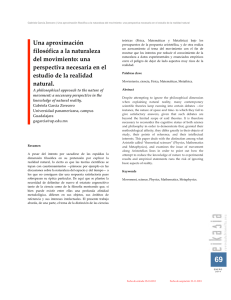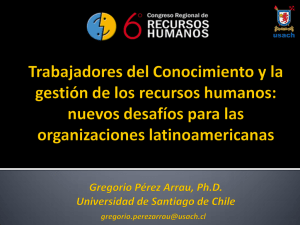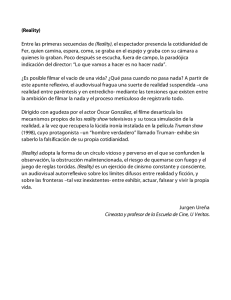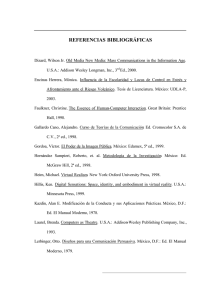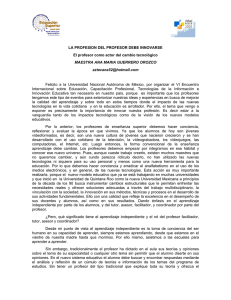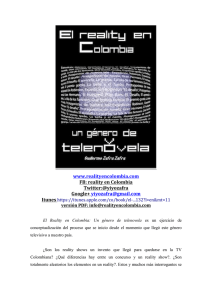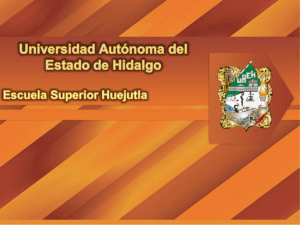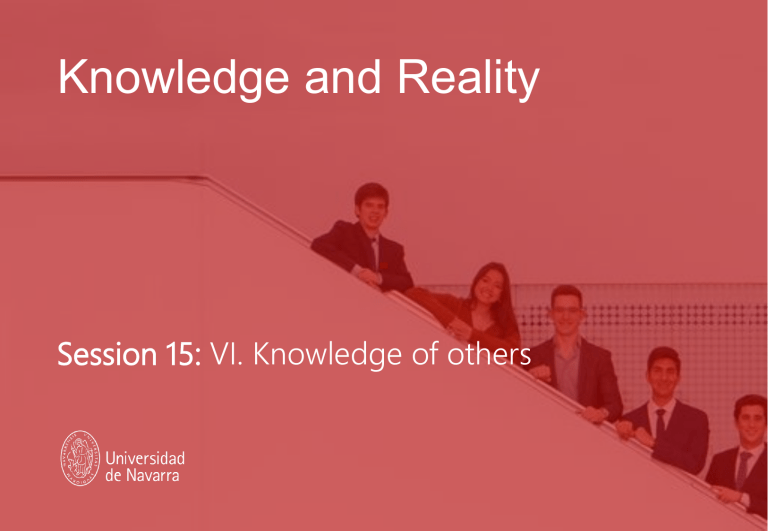
Knowledge and Reality Session 15: VI. Knowledge of others KNOWLEDGE AND REALITY. SESSION 15 Sources • LIPPS, T., 1905. Die ethischen Grundfragen. Hamburg: Voss. 1905. • LIPPS, T., "Das Wissen von fremden Ichen", in Psychologische Untersuchungen, (1907). • LIPPS, T., Leitfaden der Psychologie, Wilhelm Engelmann, Leipzig 1906. • HUSSERL, E., Cartesian Meditations (5th meditation). FCE, Mexico • STEIN, E., The problem of empathy. Trotta, Madrid • ZAHAVI, D., "Empathy, otherness, morality". XVI Jornadas Peruanas de Fenomenología y Hermenéutica. • ZAHAVI, D., Self and Other. Exploring Subjectivity, Empathy, and Shame. Oxford University Press, Oxford 2014. KNOWLEDGE AND REALITY. SESSION 15 Outline • Preliminary observation • Context: intersubjectivity • Theories (1): Access to the consciousness of others is always mediated (always with body´s mediation). • Theories (2): Access to the consciousness of others is not mediated. Direct access. KNOWLEDGE AND REALITY. SESSION 15 Preliminary observation • Fremderfahrung • Experience of others = experience I have of others, not the e the other have • Empathy (Einfühlung) We shouldn´t identity up with empathy. • Bracketing of moral connotations: grief, empathy, compassion No va a entrar en ello, solo lo va av tartar desde un pto de vista del cono KNOWLEDGE AND REALITY. SESSION 15 Context: intersubjectivity • Why is intersubjectivity important? • The subjectivity of others as a fundamental condition for the constitution of transcendent objects (para aceptar q es tras todos tnen q tener acceso a él, por eso la subj de los otros es imp) OBJECTIVITY (ACCESSIBLE TO EVEYBODY)= INTERSUBJECTIVE EXPERIENTIALITY (LAS ESTRELLAS Q VEO CND MIRO AL SOL NO SON OBJETIVAS) KNOWLEDGE AND REALITY. SESSION 15 The access to the consciousness of others is always mediated Theories of reasoning by analogy Theories of the experience of the other Access to the consciousness of others is unmediated Theories of empathy (only a kind ot thoery of exp of others, but no strictly the same) Lipps Phenomenology (Husserl, Stein) Scheler KNOWLEDGE AND REALITY. SESSION 15 Theories (1): Access to the consciousness of others is always mediated. • (A) What is given to me in the proper sense of another human being is exclusively the phenomenon of his/her physical body, only thing of you given to me in an original way. • (B) Based solely on this mode of giving oneself, one considers - in certain way - that the other is animated (q tb tnen experiencias), that the other self exists. • 2 palabra en alemnas para el cpo: Körper (físico); leib (en tanto q animado) KNOWLEDGE AND REALITY. SESSION 15 Theories (1): Access to the consciousness of others is always mediated. • How do you get to (B)? • Two possibilities • By reasoning: theories of reasoning by analogy. • By a non-inferential procedure: theories of empathy • Don´t understand it in a temporal succession KNOWLEDGE AND REALITY. SESSION 15 Theories (1): Access to the consciousness of others is always mediated. • Theories of reasoning by analogy sabemos q está aburrido por razonamiento por analogia, es el gesto q yo hago cnd estoy aburrido. Pero si esto es vd, deberíamos ir continuemente con un Espejo para mirarnos porque no somos siempre conscientes de los gestos q hacemos. KNOWLEDGE AND REALITY. SESSION 15 Theories (1): Access to the consciousness of others is always mediated. • How do you get to (B)? • Two possibilities • By reasoning: theories of reasoning by analogy. • By a non-inferential procedure: theories of empathy KNOWLEDGE AND REALITY. SESSION 15 Theories (1): Access to the consciousness of others is always mediated. • Theories of empathy Einfühlung sustantivo q vne del verbo alamán q significa sentir, “sentir en” Robert Vischer (1847-1933) Theodor Lipps (1851-1914) Empathy Edward Titchener (1867-1927) KNOWLEDGE AND REALITY. SESSION 15 Theories (1): Access to the consciousness of others is always mediated. • Theories of empathy (Lipps) • Three different fields of knowledge with different sources: ① Perception: knowledge of external objects ② Introspection: knowledge of one's own mind, acceso a las exps q he tenido. ③ Empathy: knowledge of other minds Lips: It cannot be reduced to a logical inference??? Theodor Lipps (1851-1914) KNOWLEDGE AND REALITY. SESSION 15 Theories (1): Access to the consciousness of others is always mediated. • Theories of empathy: Lipps KNOWLEDGE AND REALITY. SESSION 15 Theories (1): Access to the consciousness of others is always mediated. T1 • Theories of empathy: Lipps ① Perception? ② Introspection? ③ Empathy Percibimos el mimerdo al mirar la escena, pero no es q lo percibamos, porq no se encuenta en el mdo exterior, sino a travéés de mis ppias emociones. Aunq loo apehendamos como un suceso unitario, no percibo el miedo de la misma forma q percibo con mis ojos la escena. En este sentido, estoy poryectando mi miedo. KNOWLEDGE AND REALITY. SESSION 15 Theories (1): Access to the consciousness of others is always mediated. T4 • Theories of empathy: Lipps • How does this happen? EMPATHY INSTINCT Impulse directed to imitation (lo de abajo) Impulse directed to expression (supongo que será expresar lo que el otro expresa, acróbata) La sensación de alegría q me llega al ver la cara me hace proyectar alegría (I´m poryecting myself into the other) KNOWLEDGE AND REALITY. SESSION 15 Theories (1): Access to the consciousness of others is always mediated. • Theories of empathy: Lipps • "The psychological other individual is consequently made by myself from myself. Its inner being is taken from mine. The other individual or ego is the product of a projection, a reflection, a radiation of myself - or of what I experience in myself through the sensory perception of an external physical phenomenon - into the same sensory phenomenon, a peculiar kind of reduplication of myself." Theodor Lipps (1851-1914) KNOWLEDGE AND REALITY. SESSION 15 Theories (1): Access to the consciousness of others is always mediated. • Theories of empathy • Problems of Lipps' theory: • • • Is this an accurate description of the experience? I don´t have to be angry to understand that he´s angry, lips notion of empathy doesn´t take us waway from us Limitation of what can be empathically understood about the other person. ¿cómo Podemos tener la exp de ser abuelos si todavía no lo hemos sido? No podrímos pryectarles nada, pues todavía no hemos sentido lo q significa ser abuelos. En consecuencia, no podríamos empatizar con su experiencia de ser abuelos. Emotional contagion? KNOWLEDGE AND REALITY. SESSION 15 Theories (1): Access to the consciousness of others is always mediated. • Theories of empathy: phenomenology • Sui generis form of intentionality directed to other subjects who have experiences • Experience of the consciousness of others E. Husserl (1859-1938) E. Stein (1891-1942) KNOWLEDGE AND REALITY. SESSION 15 Theories (1): Access to the consciousness of others is always mediated. • Theories of empathy: phenomenology • Intentional structure of empathy: • Three ways of intentionally referring to an object, relación con el paper de Ortega • • • Significant Pictorial Perceptive KNOWLEDGE AND REALITY. SESSION 15 Theories (1): Access to the consciousness of others is always mediated. T7 • Theories of empathy: phenomenology V V V V V V V V V V V V V Solo tne accedo firecto a sus ppias exps, sino serían la misma persona. V V V V V V V KNOWLEDGE AND REALITY. SESSION 15 Theories (1): Access to the consciousness of others is always mediated. • Theories of empathy: phenomenology • Intentional structure of empathy: • Where to place empathy? • Different from perception • He does not give us his object in person. Puedo ver la cara, y pdo ver q está triste, pero la tristeza no se me da de forma original, solo su rostro o mi ppia tristeza. Por eso a veces no hya palabras q valga, pues la frase “te entiendo” jamás es del todo válida. • Similar to perception • The empathized object is given to us directly E. Stein (1891-1942) KNOWLEDGE AND REALITY. SESSION 15 Theories (1): Access to the consciousness of others is always mediated. • Theories of empathy: phenomenology 1. Empathy is not imaginative perspective taking. “Mi amiga debe estar sufriendo” Esto no es la empatía. la emp no es un ejercicio nd eimaginación. L del calvo es muy distinto a estar justo enfrente viendo sus tristeza de primera mano. De ahí q lo anterior “the empatizised obj is given directly to us.” KNOWLEDGE AND REALITY. SESSION 15 Theories (1): Access to the consciousness of others is always mediated. • Theories of empathy: phenomenology 2. Empathy is not a form of affective sharing. No es sentir lo q el otro siente. Puede haber envidia y emp desde un pto de vist del cono. Pues aunq no se alegre por el tne cierta aprehhensión de su alegría No tengo q estar enomorado de la mujer d emi marido para empatizar con el amor q se tnen. KNOWLEDGE AND REALITY. SESSION 15 Theories (1): Access to the consciousness of others is always mediated. • Theories of empathy: phenomenology 3. Empathy is not emotional contagion, because emp is always an intentional act. KNOWLEDGE AND REALITY. SESSION 15 Theories (2): Access to the consciousness of others is not mediated. T5 Veo el terror directamente, VEO ANTES LA IRA, Q EL TAMAÑO Y COLOR DE SUS OJOS (T6) KNOWLEDGE AND REALITY. SESSION 15 Theories (2): Access to the consciousness of others is not mediated. Cuáles son las exps q nos son más inaccesibles? Las relacionadas con el dolor, porq no se puede tener acceso al floor de otro, tampoco al mental o psicológico, lo q decía antes de la muerte.
